Shimba Hills National Reserve Day Trip from the Coast : Quick Escape into Nature:
A day trip to Shimba Hills National Reserve includes all the elements of nature, wildlife, and scenic tranquility in an idyllic location near the Kenyan coastal city of Mombasa, nestled in the green hills of Kwale County. This green park is a hidden gem on Kenya’s southern coast, close to Diani Beach, and can easily be explored by travelers who want to escape the rush of the coast.
Serving as home to parts of the East Africa coastal rainforest that are among the last surviving coastal rainforests in East Africa, Shimba Hills covers a region of more than 300 square kilometers and is famed to be a biodiversity hotspot. Visitors can spot the rare sable antelope, elephants, various antelope species, monkeys, and a rich diversity of birds, the reserve is a place to visit for nature enthusiasts and is a paradise for nature lovers and photographers alike. The undulating hills, picturesque vantage points, and majestic Sheldrick Falls fill a day in the park with fun and relaxing moments.
In this guide we will discuss all the information you need to know to have a Shimba Hills National Reserve day trip, including transport information, what to see in the park, and the entry fee, as well as when to visit. Whether your starting point is Diani or Mombasa or other destinations, this safari is an unlikely journey that will always remain in your mind with wildlife, calmness, and scenery.
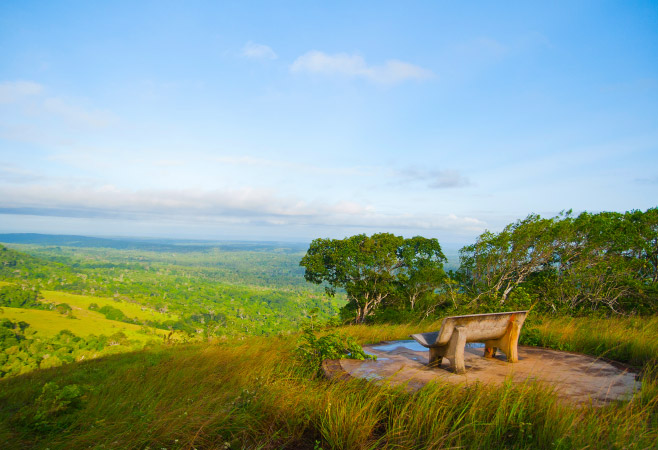
The Shimba Hills National Reserve is renowned for its dense forests, rolling hills, and unique wildlife, especially elephants, sable antelopes, monkeys, and diverse bird species
- Where is Shimba Hills located in Kenya?
- Best Time to visit Shimba Hills National Reserve
- Shimba Hills National Reserve Entrance Fees (2025)
- Shimba Hills Gates: Entry Points to Kenya’s Hidden Safari Gem
- How to Reach Shimba Hills National Reserve
- Top 6 Things to Do in Shimba Hills National Reserve
- Where to stay in Shimba Hills National Reserve
- Shimba Hills Travel Guide: Smart Tips for a Perfect Safari Day Trip
- Conclusion
Where is Shimba Hills located in Kenya?
Shimba Hills National Reserve is located in the coastal region of Kenya, about 45–50 km south of Mombasa (around 1.5–2 hours by road, including the Likoni ferry crossing) and around 25–30 km inland from Diani Beach (a 40–45 minute drive). It lies within Kwale County and is part of the larger Shimba Hills ecosystem, which includes rolling hills, coastal rainforests, and rich biodiversity.
The reserve is beautifully located on an escarpment, which presents a wonderful view of the Indian Ocean and the countryside around. It has highlands, and it is near the seashore, which makes it a perfect getaway to beat the heat of the tropics, as it is cooler and greener. Shimba Hills National Reserve is easily accessible by road and is a popular destination for day-trippers from Mombasa or Diani Beach. Its strategic location and diverse habitats make it ideal for wildlife viewing, forest walks, and visits to Sheldrick Falls.
Best Time to visit Shimba Hills National Reserve
The best time to visit Shimba Hills National Reserve is generally during one of the two dry seasons. These periods offer the most favorable conditions for game viewing and hiking.
The Dry Seasons: Best for Wildlife Viewing
The two dry seasons are considered the ideal time for a day trip to Shimba Hills:
- January to February: It is a short, hot, and dry season. The vegetation is more sparse, which allows easier viewing of animals, especially the elephants and the rare sable antelope, as they all congregate in areas of water.
- June to September: It is the peak dry season and the coolest period of the year as well. It is sunny and pleasant weather with optimum conditions to go on game drives and the trek to Sheldrick Falls. Similar to the first dry season, as the sparse vegetation gives wildlife watchers a better chance to spot animals
The Wet Seasons: Best for Birdwatching and Lush Scenery
While the dry seasons are best for a classic safari, the wet seasons have their own unique appeal:
- April to May (Long Rains): It is the wettest season. The long rains bring out all the beautiful greenery in the reserve. Although game viewing may prove to be more difficult as a result of the dense vegetation, this is a good season to go bird watching because most migratory ones are spotted.
- October to November (Short Rains): Just like the long rains, this time dampens the landscape to a vibrant and green color. Trails may be muddy when the occasional showers come during the afternoon, and now there are fewer visitors, which leaves the scenery really pretty to look at.
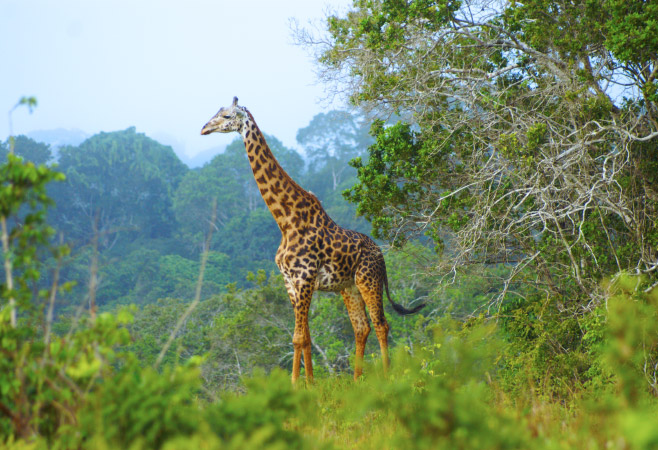
Shimba Hills National Reserve is a solid choice for backpackers looking for a dose of nature.
Shimba Hills National Reserve Entrance Fees (2025)
Shimba Hills National Reserve is a national reserve located in Kenya, just off Diani Beach and the town of Kwale; it is protected by the Kenya Wildlife Service (KWS). The fees per category and season according to the visitor type is indicated below:
Park Entry Fees (Per Person Per Day)
|
Visitor Type |
High Season(July–March) |
Low Season(April–June) |
| Kenyan Citizens (Adults) | KES 300 | KES 250 |
| Kenyan Citizens (Children/Students) | KES 250 | KES 200 |
| Residents of East Africa (Adults) | KES 300 | KES 250 |
| Residents of East Africa (Children/Students) | KES 250 | KES 200 |
| Foreign Non-Residents (Adults) | USD 26 | USD 22 |
| Foreign Non-Residents (Children) | USD 15 | USD 15 |
Note: Children are considered to be under 18 years old.
Vehicle Entry Fees
|
Vehicle Category |
Fee (KES) |
| Private Car (6 seats or less) | 300 |
| Minivan (6–12 seats) | 1,030 |
| Bus (13–24 seats) | 2,585 |
Operating Hours – Shimba Hills National Reserve
- Open Daily: 6:00 AM – 6:00 PM
The park is open on weekends and public holidays, as well as every day. - Last Entry: 5:15 PM
It expects the visitors to be at the gate no later than 5:15 PM since no visitor is permitted to enter after this time. This provides sufficient daylight in order to view and exit safely prior to closure. - Exit Time : Daily departure of all visitors outside the park should not be after 6:00 PM according to the safety rules of Kenya Wildlife Service (KWS).
Staying beyond park hours without authorization is prohibited and may result in fines or penalties.
Shimba Hills Gates: Entry Points to Kenya’s Hidden Safari Gem
The coast of Kenya has some of the most quiet and beautiful areas, and one of the locales is Shimba Hills National Reserve, which features a combination of coastal rainforest, hills, and grasslands. Visitors have to enter this spectacular reserve through an allocated gate entry, the main one being the Main Gate and the Kivumoni Gate being the other main access point.
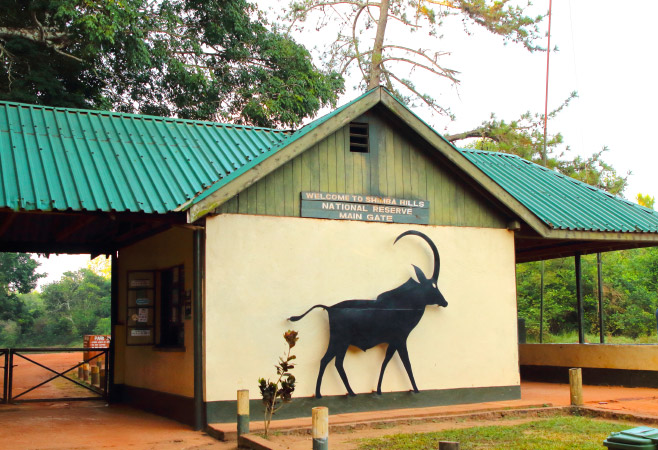
Shimba Hills National Reserve has two main entry points: Shimba Gate (also called the Main Gate, located near Kwale town) and Kivumoni Gate
1. Main Gate—The Primary Entrance
Main Gate is close to the headquarters of the reserve, just in the vicinity of the town of Kwale. This gate is the most accessible entrance point, at least to the tourists, who arrive either in Mombasa or Diani Beach. It provides a visitor information center, and most of the guided tours and park rangers are based here. This gate has a mostly good road approaching it and joins readily with the general road system at the south coast.
At the Main Gate, the facilities accessible are the ticket counters, toilets, car parking, and the screening. It is also the most convenient entry point in case you are intending to visit the Sheldrick Falls, which is one of the attractions in the reserves.
2. Kivumoni Gate – A Quieter Access Point
The Kivumoni Gate, situated at the northern side of the reserve, provides an alternative gateway, especially to the visitors that approach the reserve through the northern or inland gateways. It is not as busy as the Main Gate and would work best for visitors who are returning or have arrived on a personal safari and are not as interested in getting the buzzing beginnings to their journey.
Nevertheless, it is essential to mention that this gate has less infrastructure and can be closed at some periods of time or seasons, i.e., during the rainy months. Before you plan entry through Kivumoni, you had better consult the Kenya Wildlife Service (KWS).
How to Reach Shimba Hills National Reserve
A safari hike at Shimba Hills is an easy-to-reach attraction along the southern coast of Kenya that combines lush coastal rainforest, rolling hills, and rare wildlife. This is a dreamy place to spend a nature-filled Shimba Hills day trip, as it is situated directly in front of Diani Beach and is only about 33 kilometers from Mombasa. These are the ways to get to the reserve starting at different points.
By Road (from Diani Beach, Mombasa, or Nairobi)
From Diani Beach or Ukunda:
The most direct and popular direction starts in Diani, one of the most well-known beach resorts of Kenya. The reserve lies about 33 kilometers south of Mombasa and around 25–30 kilometers inland from Diani Beach. The drive follows the Likoni–Ukunda Road before turning onto the Kwale–Shimba Hills Road. Most sections of the road are paved, but the final few kilometers approaching the park entrance could be bumpy or gravelly, and during rainy seasons this could be a bit muddy. The best experience and navigation should include hiring a local guide/safari driver.
From Mombasa City:
If you’re coming from Mombasa, you’ll have to take the Likoni Ferry to the mainland south and follow the signs to Ukunda or Kwale. Afterwards, the same way towards Reserve goes through Shimba Hills Road. The travel time is around 1.5 to 2 hours depending on the traffic and ferry waiting times.
From Nairobi:
Visitors coming from Nairobi can either fly or drive. By road, it's about 500 kilometers and takes around 9–10 hours, making it less ideal for a day trip. If you choose to drive, take the Mombasa-Nairobi Highway (A109) to Mombasa and follow the same southern route via Likoni to Kwale.
By Air – The Fastest Option to Reach Shimba Hills
The fastest means of travelling close to the Shimba Hills National Reserve is by flight, especially when you are coming in through Nairobi or other regions of Kenya. Ukunda airstrip (UKA), near Diani Beach in Kwale County, is the closest airport. This is a small domestic airport that has connections with Nairobi through air transport by companies such as Jambojet, Safarilink, and Skyward Express,, which have a daily flight service to this airport. Nairobi Wilson to Ukunda flights take anywhere between 1 and 1.5 hours.
After you arrive at Ukunda Airstrip, you can be in Shimba Hills within 30-40 minutes by car. A taxi can be hired, or there can be a hotel shuttle, or a local safari transfer may be pre-booked to take you directly off the airstrip to the reserve gate. The majority of the tourists and resorts in Diani have full-day excursions, including pickup at the airport; it is not complicated to organize.
This is the major air route that is particularly suitable for people on brief itineraries or those who use coastal touristic stays at the beach and the Shimba Hills wildlife experience.
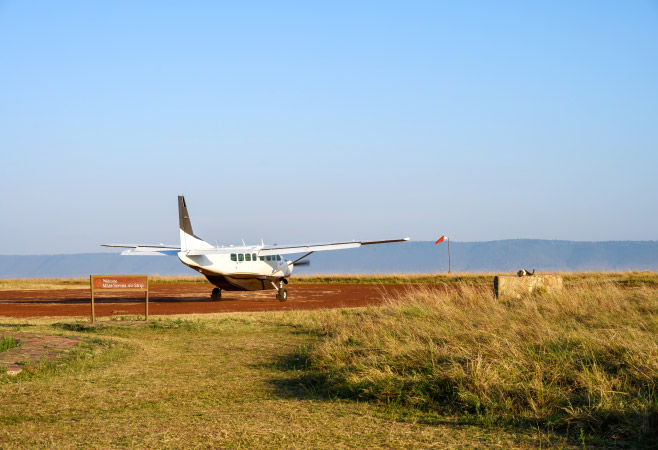
Flying is the most time-efficient way to get close to Shimba Hills National Reserve
Public Transportation (Matatus)
Matatus (shared minibuses) are available from both Mombasa and Ukunda/Diani to Kwale town. From Kwale, you may need to hire a boda-boda (motorcycle taxi) or a private vehicle to reach the Main Gate of Shimba Hills, as the matatus don't go all the way into the reserve.
While budget-friendly, this option is less convenient and not recommended for those unfamiliar with local travel logistics.
By Tour Operator or Hotel Shuttle – The Most Convenient Option
Several hotels, beach resorts, and safari lodges in Diani Beach and Mombasa provide well-planned tours to Shimba Hills National Reserve in one day. These are the general inclusions in these tours:
- Transfers to and fro in a personal car or safari van
- Trained guide services
- Lunch is packed/buffet (sometimes at a scenic picnic area or lodge inside or close to the reserve).
- Entry fees and, in certain instances, game drive fees
- Optional add-ons, such as a stop at the Sheldrick Falls or a visit to a local village
It is the best choice when a traveler wants an effortless vacation since all arrangements are predetermined. You do not need to drive long winding roads, design your travel, and be at the mercy of time schedules; the operator handles all the logistical requirements.
These tours tend to start rather early in the morning (around 6:30–7:00 AM) and come back later in the afternoon. There are a lot of packages, and these can be tailor-made according to preference and can be made with your hotel concierge or prior booking online with your recognized safari operator. If staying in Diani, you can get to the park entrance in 30-45 minutes.
It is the most convenient and easy approach to visiting Shimba Hills for someone experiencing it for the first time, families, or individuals that have not used local transport.
Top 6 Things to Do in Shimba Hills National Reserve
One of the greatest treasures found in Kenya is Shimba Hills National Reserve, unlike other areas featured by coastal rainforests, hills, and open grasslands all combined together in a rich configuration. The park is ideal for those seeking a peaceful alternative to Kenya’s more crowded national parks. Whether this is your first time or you are just back to get more wilderness, you will never lack adventure. The best things to do in Shimba Hills National Reserve are depicted below.
1. Go on a Game Drive
Some of the top tourist attractions at Shimba Hills are the availability of the opportunity to observe the wildlife in a green and wooded background. It has Kenya’s only population of sable antelopes and other animals such as elephants, warthogs, buffaloes, and monkeys. A guided game drive will allow you to observe the land as you see animals in their natural habitat. The best time to have sightings is in the early mornings or late afternoons.
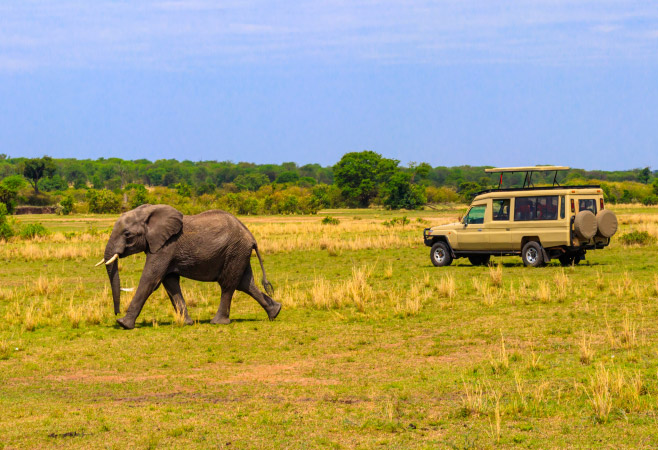
Game drives allow guests to embark on guided tours through Shimba Hills National Reserve to observe the park's diverse wildlife.
2. Have a Sheldrick Falls Nature Trail
Nature lovers must do the Shimba Hills hike to Sheldrick Falls. A moderate hike of about 2–3 km each way (4–6 km roundtrip), usually taking 1–2 hours that is through lush tropical forest and leads to an impressive 21-meter-high waterfall in the end. There is also a natural pool at the base of the falls to swim in, or you could just spend time refreshing yourself in the falling water and forest environment. Visitors are normally escorted by a Kenya Wildlife Service ranger to ensure that they are safe and to guide them.
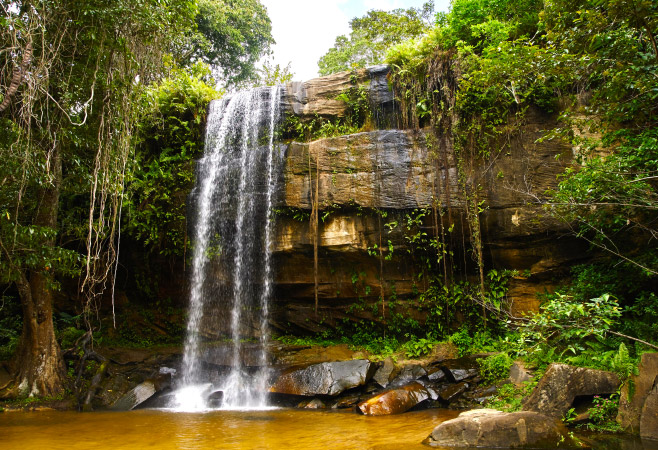
The Sheldrick waterfalls are a pretty safari attraction with an impressive 21-meter-high drop of fresh spring water with a striking natural plunge pool at the bottom.
3. Scenic Viewpoints Enjoyed
The reserve is located in high land that overlooks coastal plains and the Indian Ocean. A number of vantage points, such as Elephant Hill and Marere Viewpoint, are vantage points to view the rolling hills in the park, the distant ocean, and thick foliage. And on a clear day you can see the shape of Wasini Island. These are ideal places to take photographs or simply just where you can get some alone time with nature.
4. Go to Sable Antelope Sanctuary
The park is a special sanctuary to sable antelopes, and the park safeguards one of the rare and beautiful antelopes in Kenya. With guided tours you can be able to explore further into the sanctuary zones where the elusive animals are mostly sighted on their grazing grounds in the open glades.
5. Birdwatching and Flower Spotting
Avian life will delight the birdwatchers here—there are more than 200 species of birds that have been sighted in Shimba Hills. Seek hornbills, turacos, eagles, and forest warblers. A variety of flora is also in the reserve, some of which include endemic and medicinal ones. It is a paradise for a botanist, more so in the wet climatic season when greenery is rich and flowers are blossoming.
6. Picnic and Relaxation
There are special picnic areas such as the Makadara Picnic Site, where there are seats and a shaded rest area. On a family-oriented outing or a serene one surrounded by nature, it is a welcoming area to unwind over your lunch after a hike or game drive.
Where to stay in Shimba Hills National Reserve
When looking to spend some time exploring the beautiful waterfalls, rolling hills, and coastal forests of Shimba Hills National Reserve, your choice of accommodation can be a key to the overall experience.
Fortunately the reserve has a number of lodges and eco-camps comprising a diverse selection of options in terms of preferences and budgets (luxury eco-retreats to basic nature camps). Whether it is a romantic getaway, a family adventure, or a safari centered on wildlife, anyone will find something they can enjoy.
1. Shimba Hills Lodge
Perhaps the most famous lodge to be found in the reserve, Shimba Hills Lodge is a special tree lodge located deep in the rainforest. The lodge is overlooked by a natural watering hole where you can view wildlife in the comfort of your room or deck. You should also expect to see elephants, bushbuck, and a richness in birds. The lodge has raised wood walkways, rustic forest-facing rooms, and an on-site restaurant to serve local and international cuisine. It is perfect for those wishing to be located directly in the core of the reserve.
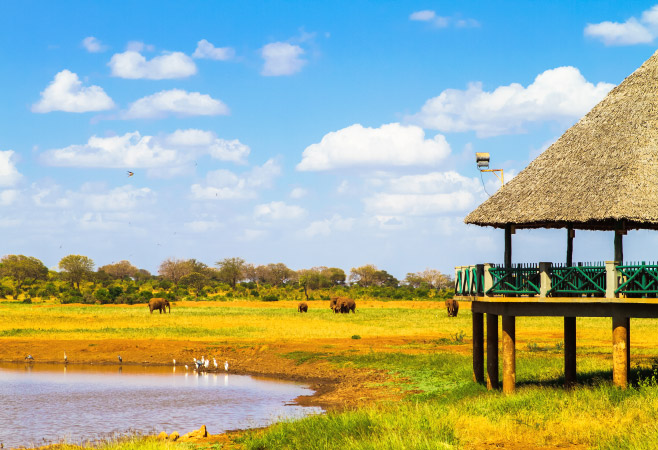
Shimba Hills Lodge enjoys a prime location within Shimba Hills National Reserve, making it a paradise for nature lovers and wildlife enthusiasts.
2. Kutazama Lodge
Kutazama Lodge, situated near Kwale just outside the reserve, is a more expensive and luxurious lodge. It is a small lodge surrounded by tropical gardens on a cliff overlooking the Indian Ocean and the canopy of the forest. It has luxurious villas and in-house plunge pools, and it offers exclusive services that are perfect to accommodate honeymooners or those on a couple's getaway. The location was not in the reserve, but it is a nice and quiet location that is easy to use as a base to do day trips.
3. Pumzika Tu Eco Camp
Pumzika Tu Eco Camp is a sustainable eco-camp a short distance out of the reserve boundary and only 6 km off of the road if you are interested in something more rustic and economical. It provides tents and basic cabins, group dining, and local guides who can assist you in planning your trips into the reserve. The camp helps with community conservation work and has an off-grid, back-to-nature experience for eco-friendly tourists.
4. Green Safari Lodge
Green Safari Lodge is one more excellent choice close to the gate because of its serene surroundings, cool bandas, and a pool. The staff also takes guided tours into the reserve and others such as the Mwaluganje Elephant Sanctuary. It is admirably suited to families or the road warriors in need of mid-range comfort in the vicinity of Shimba Hills.
Shimba Hills Travel Guide: Smart Tips for a Perfect Safari Day Trip
You may only go on a short getaway or on the entire Shimba Hills National Reserve day trip, but these tips will surely make that experience easier and more comfortable:
1. Travel Documents You Should Carry
Make sure to bring the correct documents for a hassle-free entry:
- Valid Passport: Needs to be valid 6 months after the date that you travel.
- eTA (Electronic Travel Authorization): Since 2024, the majority of international travelers to Kenya are required to obtain an eTA before traveling by applying online in advance. It substitutes the conventional visa-on-arrival and has to be printed or stored digitally.
- Travel Insurance: Highly Recommended. It ought to include medical emergencies, delays in trips, theft, and activities such as hiking/safaris. Certain lodges will request a copy of the coverage, as they cannot proceed with a booking without it.
- Yellow Fever Certificate: You should have one in case you are flying in or passing through countries vulnerable to yellow fever.
- Booking Confirmations: Soft or hard copies of your bookings at the lodge/hotel, transport, or guided tour.
- Local Identification or Work Permit (where available): This can be used to avail some discounts in park entry fees by residents or expats in Kenya.
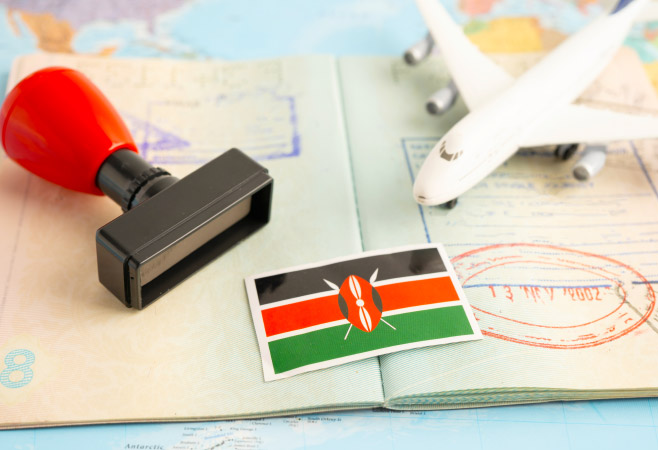
Travel requirements to Kenya for foreign nationals
2. What to Pack
- Lightweight, breathable clothing (avoid bright colors)
- Good hiking boots or trail shoes
- Insect repellent and sunscreen
- Water bottle (bring enough for hikes)
- Binoculars and camera
- Rain gear (if visiting during shoulder season)
3. Transportation Tips
A 4x4 vehicle is highly advisable since there are occasional bad roads in the reserve. Otherwise, you will need to go there by a guided tour out of Diani, Mombasa, or Nairobi; many include pickup at the hotel and back.
4. Wildlife Watching Etiquette
- Keep silent and make no sudden movement when sighting an elephant, the sable antelopes, or birds.
- Nevertheless, do not feed and/or touch wild animals.
- Follow ranger or guide instructions at all times.
5. Safety and Park Rules
- Keep to paths and roads.
- Never hike alone; it's better to hire a guide.
- Never park the vehicle anywhere undesignated.
- There are various rules to be followed in the park to keep you safe and wildlife safe.
Conclusion
A day trip to Shimba Hills National Reserve is an enchanting escape from the ordinary. It's a reminder that safari adventures aren't limited to savannas and that a world of vibrant green, unique wildlife, and stunning waterfalls awaits just a short journey from the Kenyan coast. Whether you’re a nature lover, an avid hiker, or simply looking for a change of scenery, Shimba Hills offers an accessible and deeply rewarding experience that will be a highlight of any trip to Kenya.
If you're visiting Kenya’s coast, don't miss the opportunity to venture inland for a day trip to Shimba Hills National Reserve—a breathtaking escape into one of Kenya’s most serene and biodiverse landscapes.
Related Articles
- The Ultimate Foodie’s Guide: The 13 Best Restaurants in Watamu, Kenya
- The Ultimate Guide to Shopping in Mombasa: Markets, Malls & Must-Buy Items
- Explore the Best Hotels in Nyeri: Where to Stay for Comfort and Value
- A Culinary Journey: The 12 Best Restaurants You Need to Try in Westlands, Nairobi
- More Than Just Lake Victoria: A Tourist's Guide to the Best Nightlife Experiences in Kisumu
- The Ultimate Tea Explorer: Discover the 11 best places to visit in Limuru a Quiet Weekend Escape
- From Peaks to Plains: Exploring the 11 Best Places to visit in Kitale for Your Bucket List
- From Luxury to Comfort: A Guide to the Top 14 Hotels in Nakuru for Unforgettable Memories
- A Guide to the Best Cafés and Coffee Shops in Momba for Quality Brews and Unbeatable Vibes
- Dancing Until Dawn: Discovering the Ultimate Nightlife in Mombasa, Kenya











